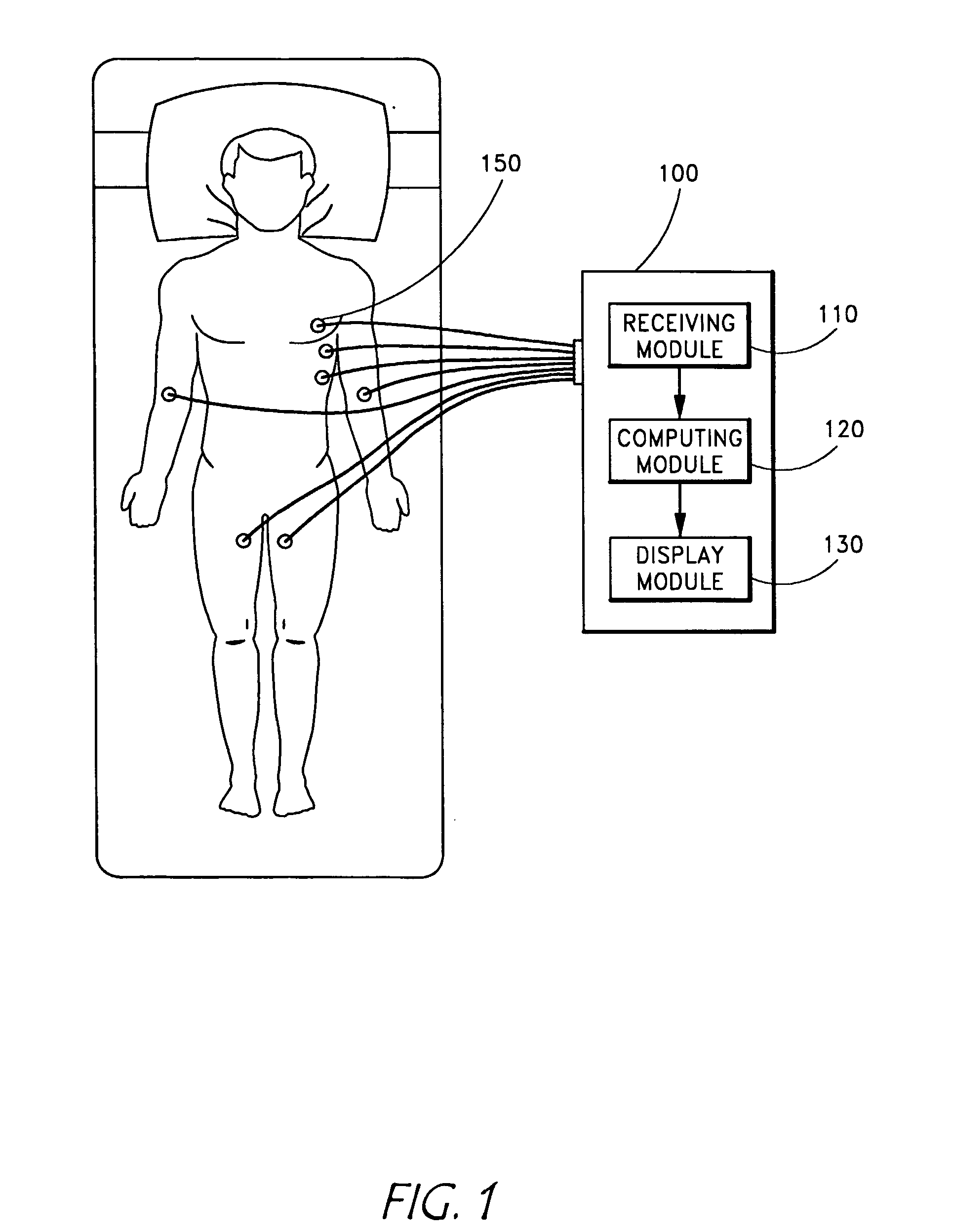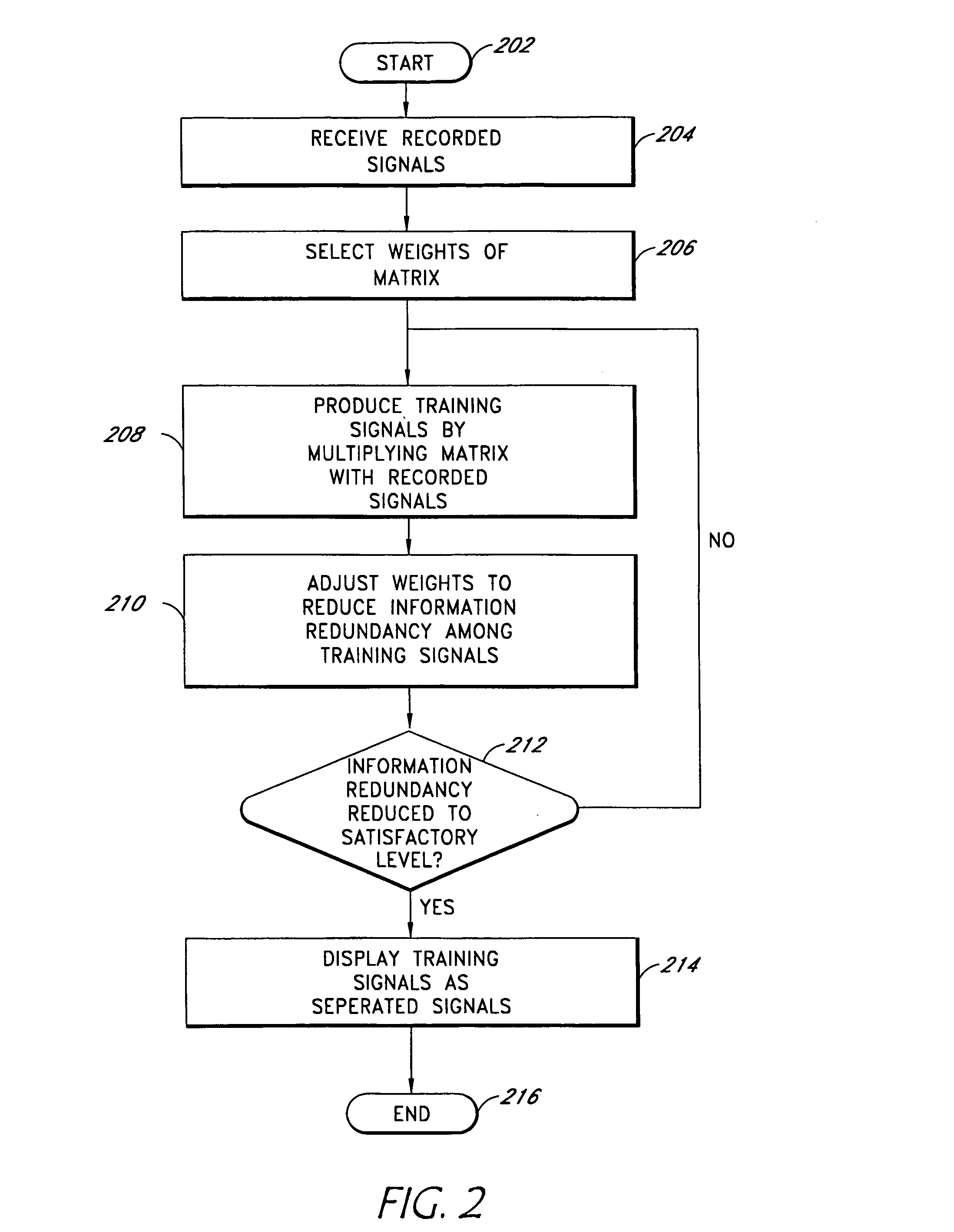System and method for separating cardiac signals
a cardiac signal and signal separation technology, applied in the field of medical devices, can solve the problems of not being able to prove whether the more random data is truly “noise” and meaningless, and it is difficult to assess, and achieves the effect of effectively inhibiting these complex arrhythmias, facilitating the effective localization of these complex arrhythmias, and quick targeting
- Summary
- Abstract
- Description
- Claims
- Application Information
AI Technical Summary
Benefits of technology
Problems solved by technology
Method used
Image
Examples
Embodiment Construction
[0028] Embodiments of the invention relate to a system and method for accurately separating medical signals in order to determine disease states in a patient. In one embodiment, the system analyzes EKG signals in order to determine whether a patient has a heart ailment or irregularity. As discussed in detail below, embodiments of the system utilize the techniques of independent component analysis to separate the medical signals from one another.
[0029] In addition to the signal separation technique, embodiments of the invention also relate to systems and methods that first separate signals using ICA, and then perform an analysis on a specific isolated signal, or set of isolated signals, using a “chaos” analysis. As described earlier, Chaos theory (also called nonlinear dynamics) studies patterns that are not completely random, but cannot be determined by simple formulas. Because cardiac signals are typically non-random, but cannot be easily described by a simple formula, Chaos theor...
PUM
 Login to View More
Login to View More Abstract
Description
Claims
Application Information
 Login to View More
Login to View More - R&D
- Intellectual Property
- Life Sciences
- Materials
- Tech Scout
- Unparalleled Data Quality
- Higher Quality Content
- 60% Fewer Hallucinations
Browse by: Latest US Patents, China's latest patents, Technical Efficacy Thesaurus, Application Domain, Technology Topic, Popular Technical Reports.
© 2025 PatSnap. All rights reserved.Legal|Privacy policy|Modern Slavery Act Transparency Statement|Sitemap|About US| Contact US: help@patsnap.com



